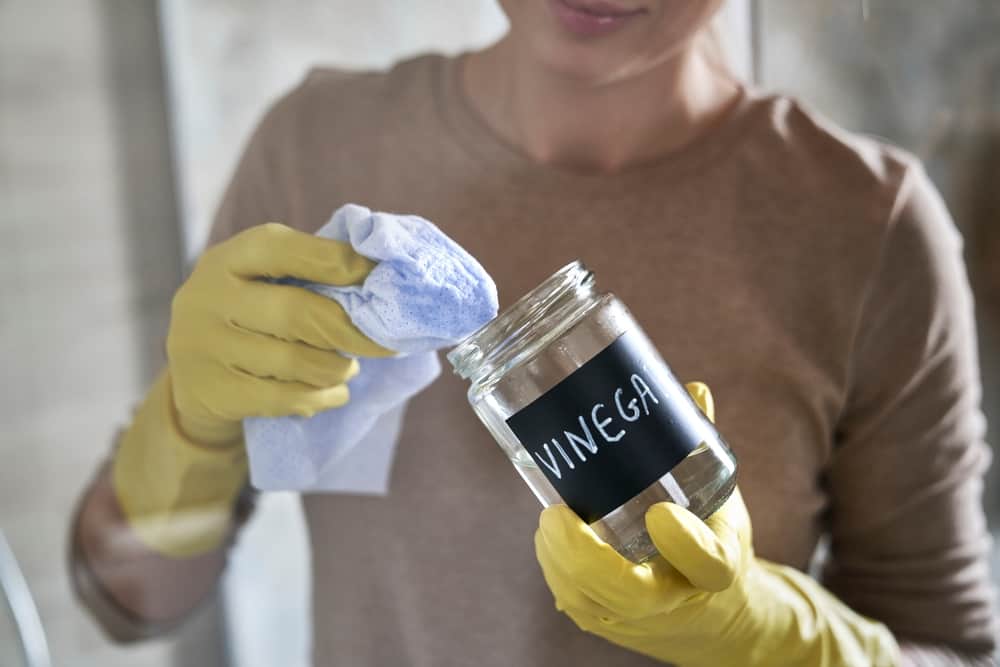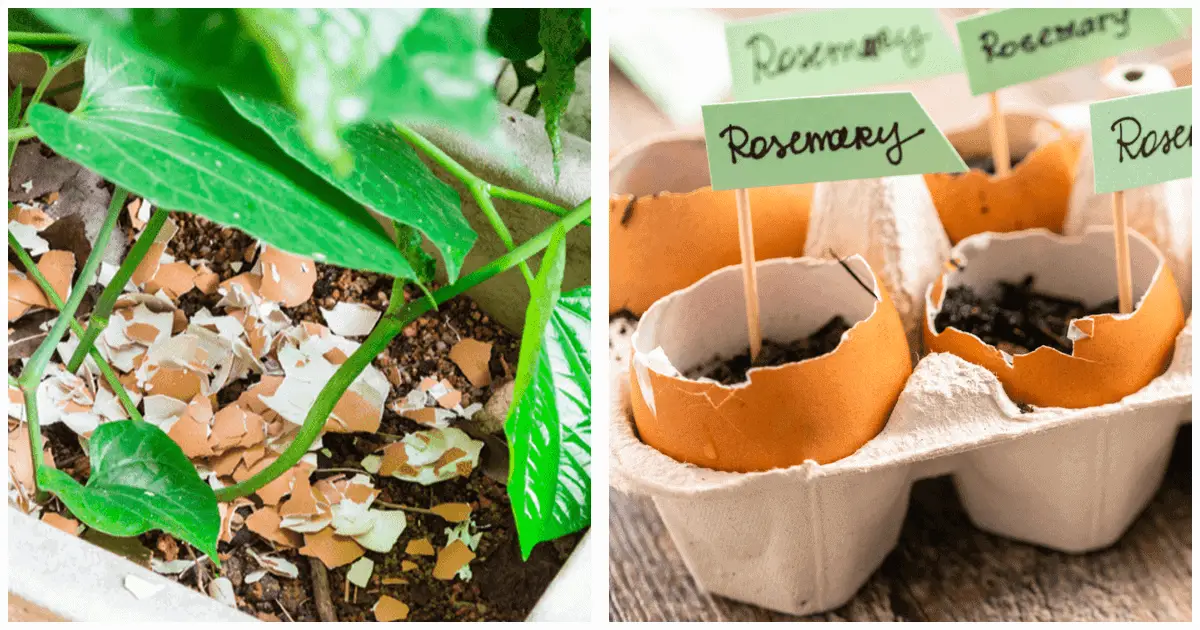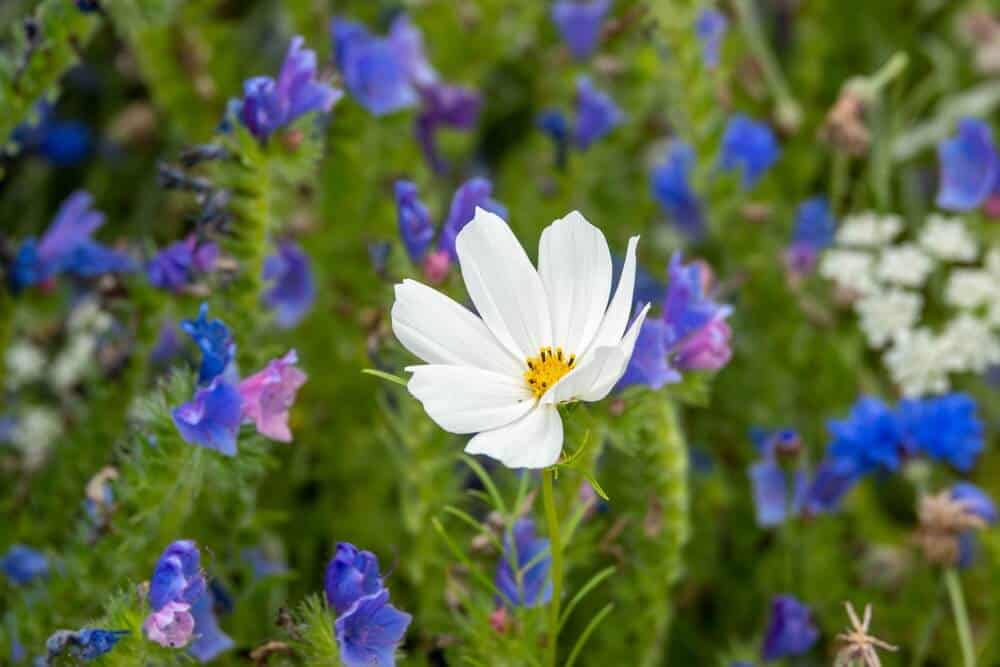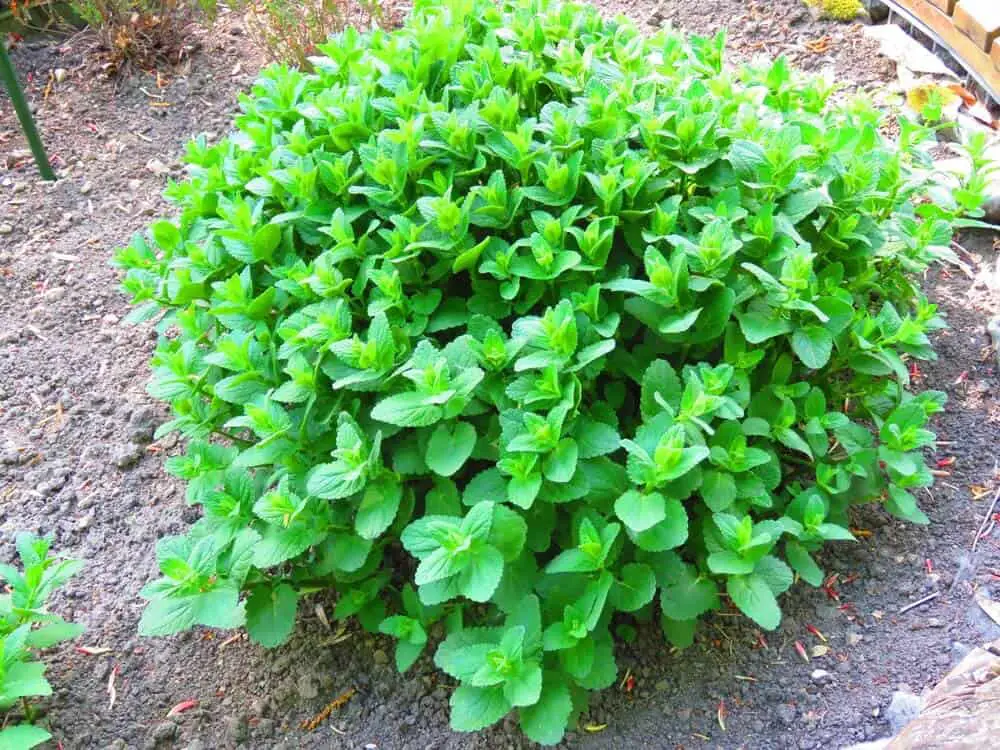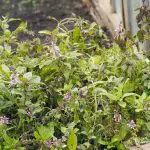It’s always a big help when household items have multiple uses. That way you don’t have to spend money on a big container of products you only need once or twice.
Basic household items are usually inexpensive as well. It’s even better when the product is natural instead of a chemical cleaner, for example.
White vinegar combines all of these benefits into a single jug. It’s cheap, natural, and can be used for cooking, cleaning, and even gardening!
White vinegar can and should be a staple of your gardening supplies. It can
Read the following list for even more garden uses of white vinegar!
20 Uses For White Vinegar In Your Garden
White vinegar isn’t just for cooking or even cleaning indoors. It can also be used in many surprising ways out in your garden.
Read this handy list for tips on how to make the most of your gardening with some help from white vinegar.
1. Weed Killer
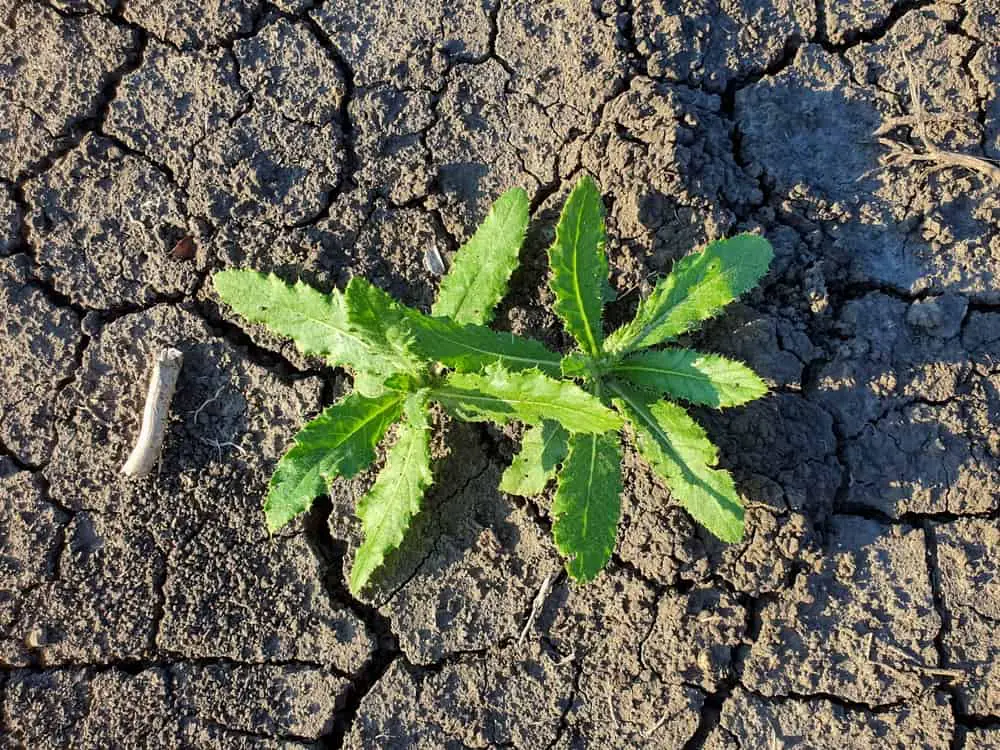
Controlling weeds is an essential part of maintaining a healthy and beautiful garden. But if you’re worried about using harsh chemicals around your plants and home, white vinegar can help.
Just mix one gallon of white vinegar with one cup of salt and two tablespoons of dish soap. Then, apply generously to the problem areas of your garden, and the weeds should disappear in two to three days.
Be careful around the other plants, however; vinegar can harm them just as much as it does the weeds.
2. Extend The Life Of Your Bouquets
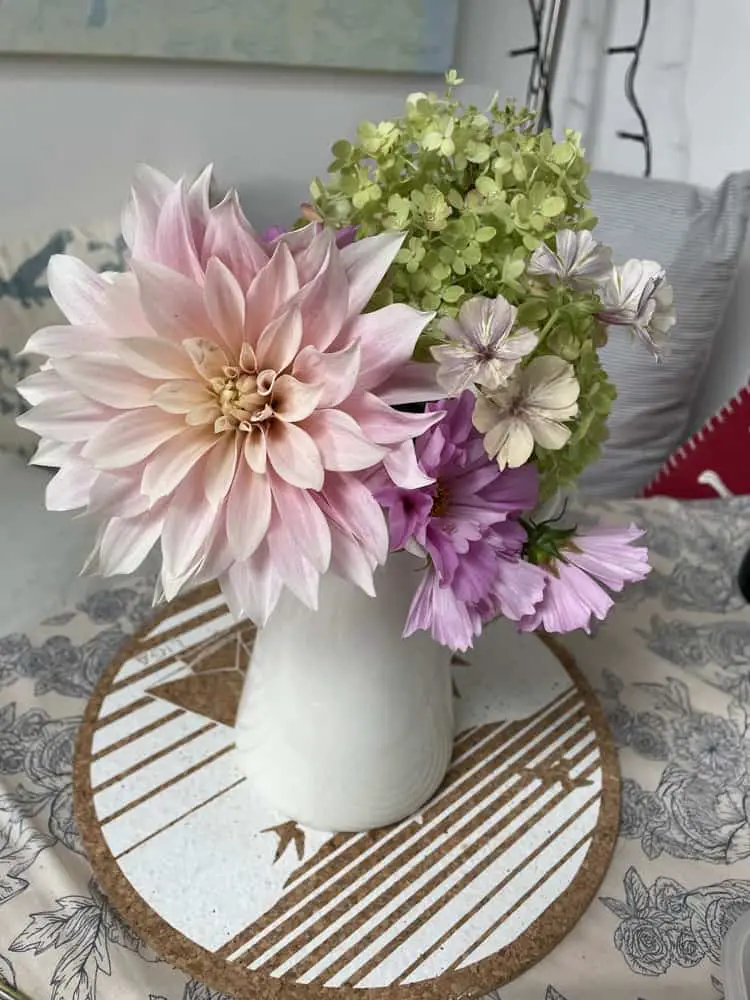
One of the pleasures of gardening is literally reaping what you sow. It’s nice to take flowers from your garden to put on display in your home.
To make your flowers last longer in a vase, fill it with one quart of water, two tablespoons of sugar, and two tablespoons of white vinegar.
Refill the vase when the mixture gets low, about every two or three days.
3. Clean Your Bouquet Vases
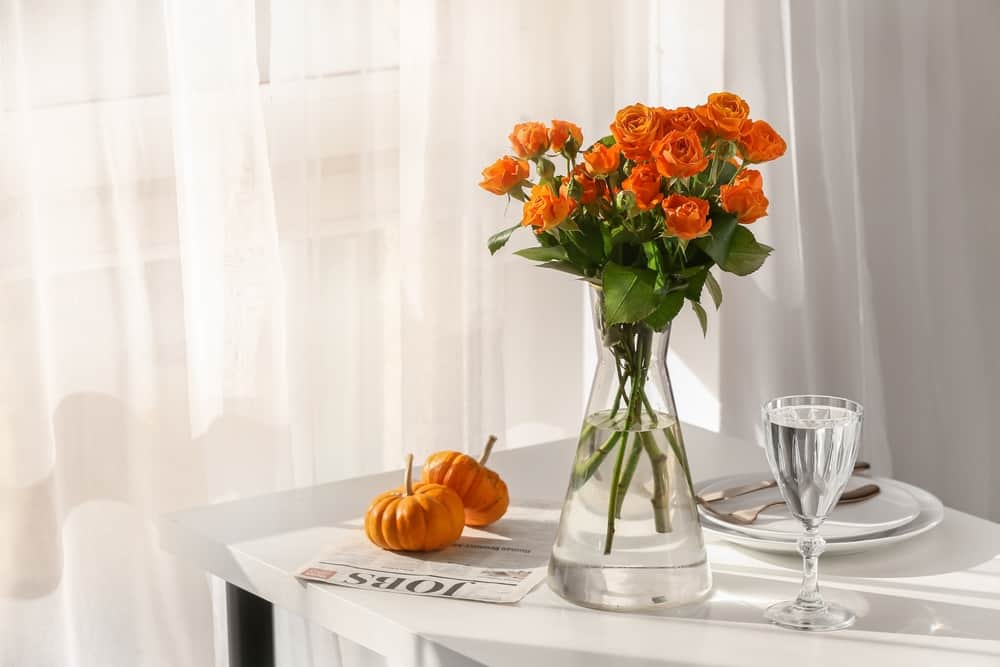
Speaking of bouquets, don’t forget to take care of the vases in which you display them! If your vases have water lines from previous uses, wipe them away with white vinegar!
Soak a paper towel in white vinegar and then wipe away the water lines. For stubborn or hard-to-reach stains, fill the vase with equal parts water and vinegar. Let soak for a few minutes, and then rinse.
4. Clean Your Terracotta Pots
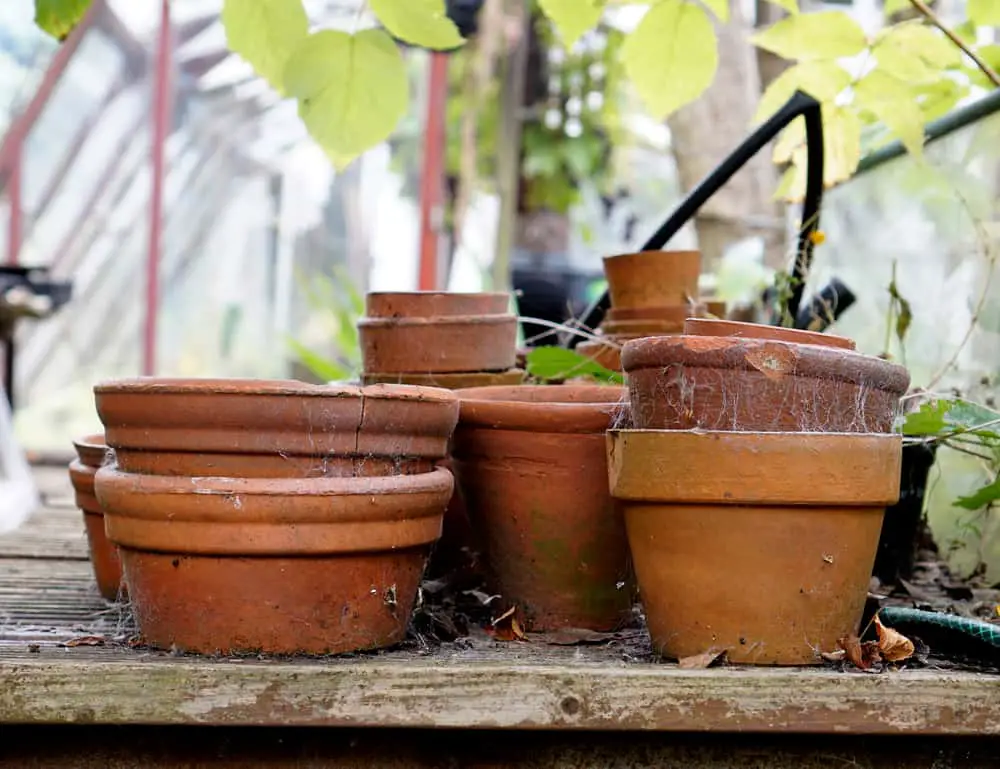
Terracotta pots are a lifesaver for gardeners working in a small space. They allow you to grow beautiful flowers and delicious herbs even without a garden, such as in an apartment building.
However, terracotta is very porous and can absorb minerals, like salt, which leave behind white stains. To keep your pots from looking dingy, you can soak them in a white vinegar and water mixture.
Mix together four cups of white vinegar and four cups of distilled water for about 30 minutes. Wipe with a cloth to remove any residual build up and let dry.
5. Germinate Seeds Faster

Soaking your seeds, or germinating, before you plant them outside can extend the life of your plants. You’re acclimating them to the outside environment without exposing them to harsh elements that could hinder their growth.
White vinegar can help speed the germination process along but be careful not to use too much. A teaspoon or less per cup of water is plenty to soften the seeds and allow the sprouts to push through.
Any more than that and you risk the acidity of the vinegar doing more harm than good. You should also only soak them for 12 hours at most. Try soaking your seeds in vinegar overnight; when you wake up, the seeds should be ready to sprout!
6. Ant Spray

While ants are important to our ecosystem, they can still be an annoyance or downright menace in your garden. Use this simple vinegar solution to keep these creepy-crawlies at bay.
In a spray bottle, mix one-part water and one-part white vinegar. Spray the solution on your garden walkways, the walls of your flower beds, or wherever you see ants marching along.
Be careful not to spray the solution on your plants or the soil near them. Too much vinegar can harm most plants.
7. Remove Rust From Your Tools

Since white vinegar is acidic, it’s a very effective rust-remover. Combined with abrasive salt, it can help return your rusty tools to their former glory.
Find a container big enough for the metal part of your tool. Fill the container with white vinegar, keeping track of how many cups you use. You want to fully cover the metal surface with vinegar.
Four every four cups of vinegar, add ¼ cup of salt. Let the tool sit in the mixture for one to three days. You can check the tool’s progress during that time and take it out once the rust starts to break down.
Finally, use steel wool or other abrasive surfaces to scrub the rust from the tool. Don’t forget to rinse and thoroughly dry the tool, or else you’ll have to clean it again soon!
8. Trap Fruit Flies

If you have fruit trees or bushes, you may notice fruit flies flocking to your garden. Not only are these insects harmful to your fruit, but they’re also just plain annoying.
Fruit flies will always be attracted to fruit, obviously. But you can still trap them to make them less of a menace.
Take a small bowl or plastic bottle and fill it with white vinegar and a few drops of dish soap. Poke holes in the plastic bottle so the flies can get in.
The flies will be attracted to the scent of the vinegar and investigate. Then, the dish soap causes them to sink below the water and trap them.
9. Deter Unwanted Animals

Many animal pests, such as racoons or wild rabbits, rely on their sense of smell to find food. Their ability to smell is typically much stronger than a human’s. So, if you find the smell of vinegar strong, imagine what they think of it!
If you have animals sneaking into your garden to sample your greenery, use white vinegar to keep them out. Simply soak some rags in white vinegar and place them at regular intervals around the perimeter of your garden.
The caustic smell of the vinegar will make smell-sensitive animals more reluctant to enter your space.
10. Clean Your Garden Furniture
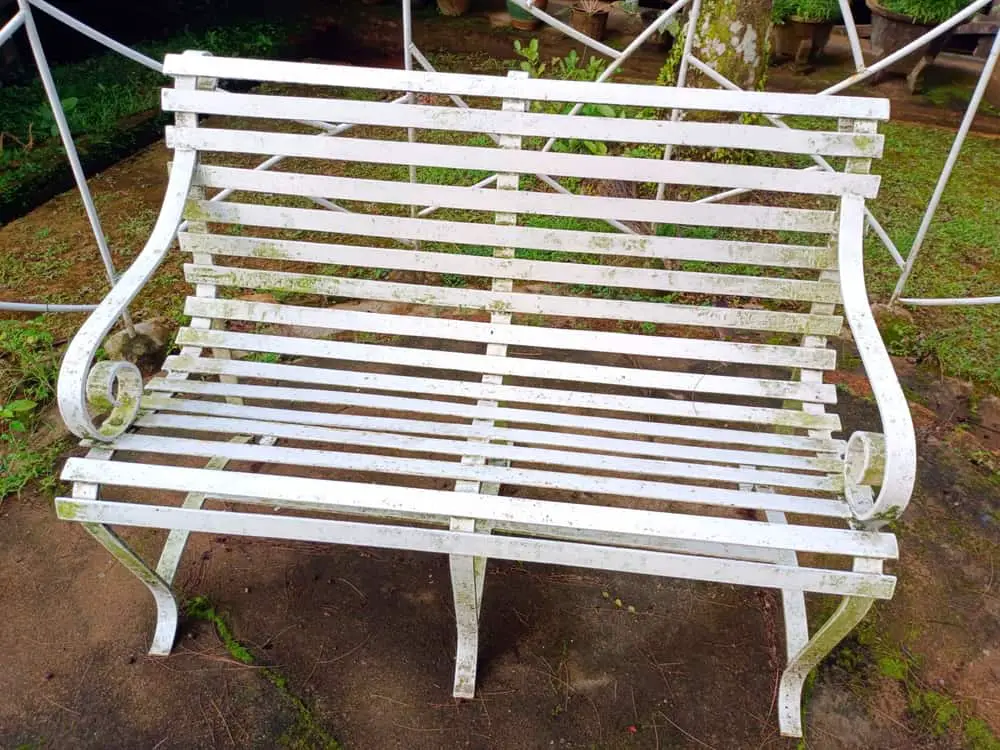
Sitting down to enjoy the garden you’ve cultivated is one of life’s greatest pleasures. But outdoor furniture can sometimes get grimy, which can really put a damper on your enjoyment.
To keep your furniture clean and sanitary, wipe it down regularly with white vinegar. The acidity of the vinegar helps break down dirt and grime.
It can also help remove stubborn odors, although you’ll want to rinse the furniture with a wet cloth afterwards. Otherwise, you’ll just replace the old odor with a vinegar smell!
11. Raise Your Soil’s Acidity Levels
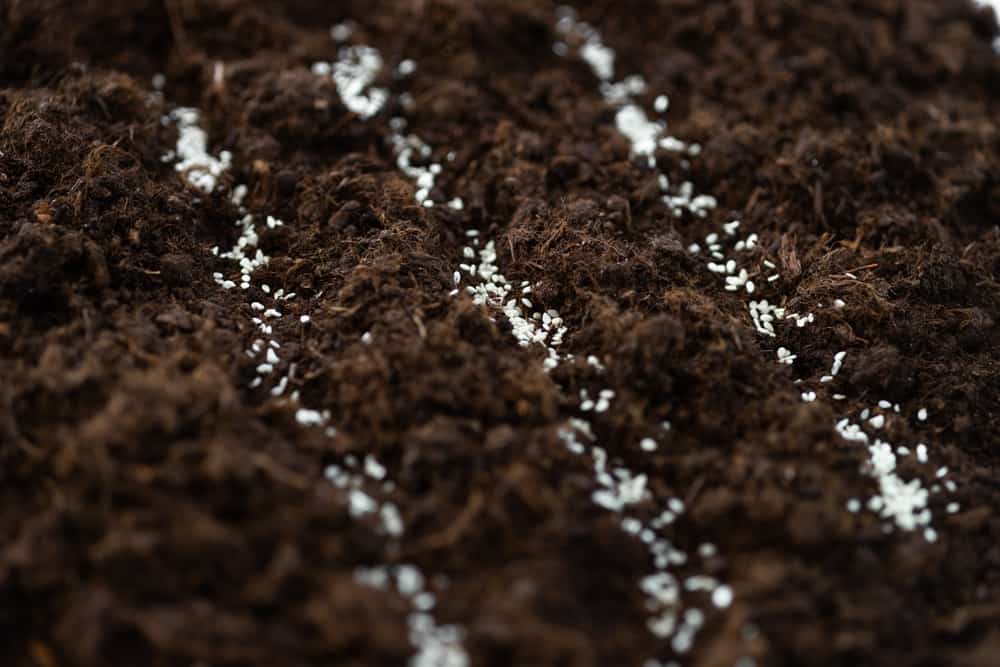
Although vinegar can cause damage to many plants, there are a number of plants that need acidity to grow. These include gardenias, rhododendrons, and hydrangeas.
If you find your acidity-loving flowers are in need of a boost, try watering them with a white vinegar mixture. Add one cup of white vinegar to a gallon of water and water these plants as normal.
Avoid using this mixture on any plants that don’t need acidity, however.
12. Get Rid Of Snails And Slugs On Your Walkways

Nobody wants to step on a slug or a snail as they walk through their garden. If these pests won’t leave your pathways alone, try spraying them with vinegar.
Fill a spray bottle with white vinegar and keep it handy in your garden. The next time you see a slug or snail on your pathways, give it a spritz!
Remember to only spray on walkways or other inorganic surfaces. Vinegar can cause damage to certain plants if it comes into contact with them.
13. Keep Your Birdbath Clean
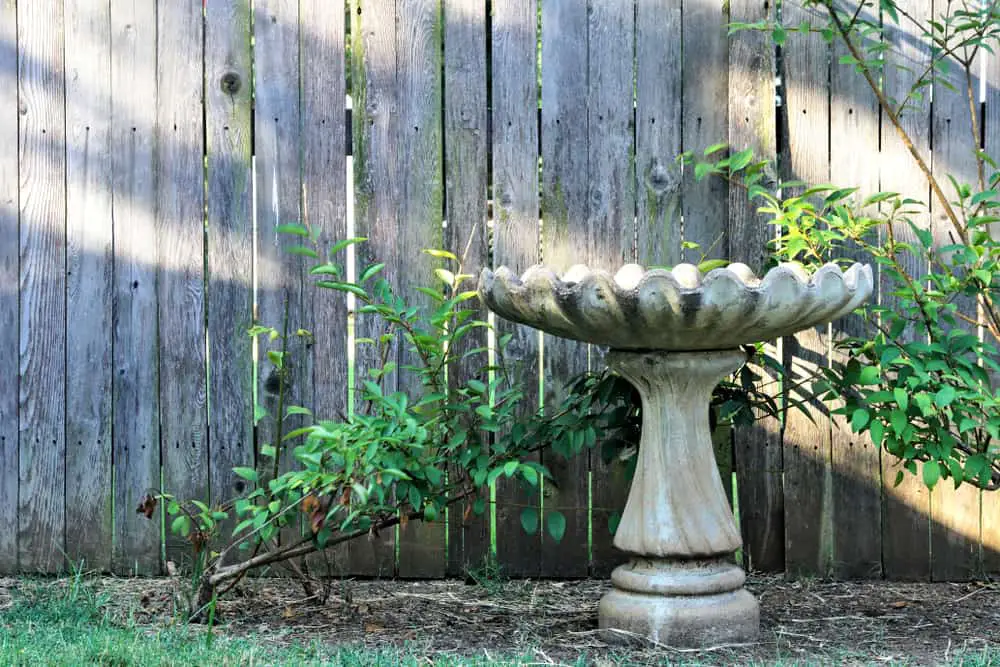
Birdbaths can get pretty dirty with bird leavings and the grime of stagnant water. Why not give it a vinegar rinse the next time you change the water?
Use one-part white vinegar to nine-parts water to remove any buildup from your water fountains. It’s a nice, natural way to keep things clean.
By using the vinegar mixture regularly, you’ll save yourself from doing a heavy-duty cleaning down the road.
14. Wash Away Berry Stains
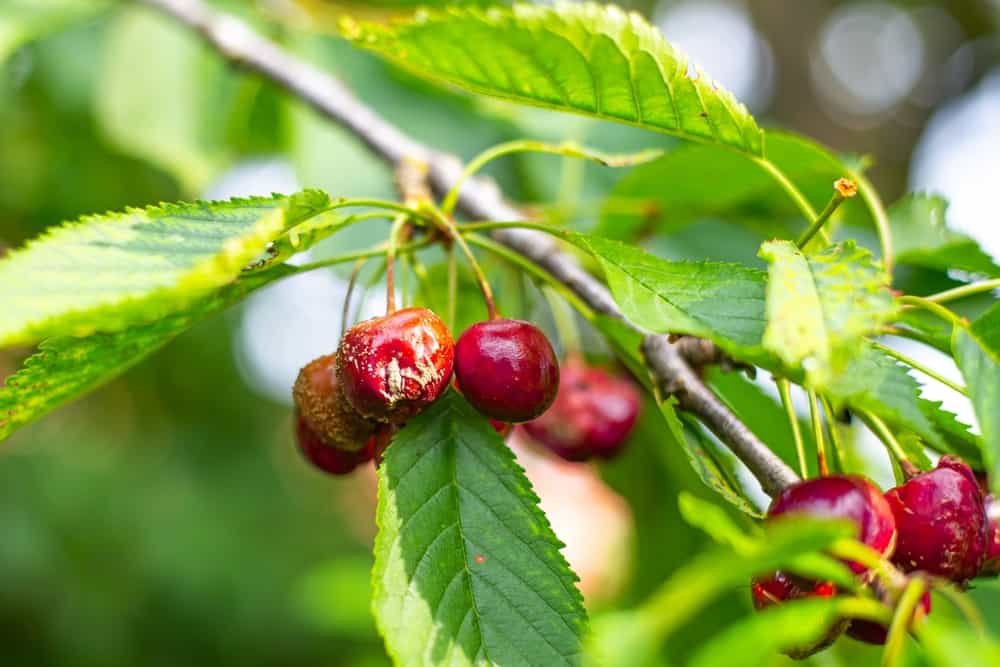
Berries are delicious, especially when eaten fresh, but they can get messy. Not only that, but their stains are very difficult to remove.
The natural acidity of white vinegar can help break down the organic material of the juice stains, making it easier to wash away. Simply scrub your hands with a little vinegar before you head for the soap and water.
You can also try this on garden paths or other hard surfaces. Let the vinegar soak the stains for a few minutes, then rinse with your preferred cleaning solution.
15. Remove Calcium Build-Up From Masonry

Sometimes masonry like brick or limestone can get a dusty white film on the surface.
This is “efflorescence.” Efflorescence is just mineral deposits being brought to the surface through water evaporation. Minerals like calcium and salt leave behind the dusty film.
While usually not harmful, this film can be unsightly in an otherwise beautiful garden. White vinegar can help you remove mild build-up before it gets out of hand.
Mix equal parts vinegar and water in a buck or spray bottle. Apply the solution to your garden masonry and let it soak for up to half-an-hour. Then, take a scrub brush and scrub away the deposits, reapplying more vinegar solution as needed.
Rinse your masonry with water and they should look spick-and-span.
16. Remove Build-Up From Spigots
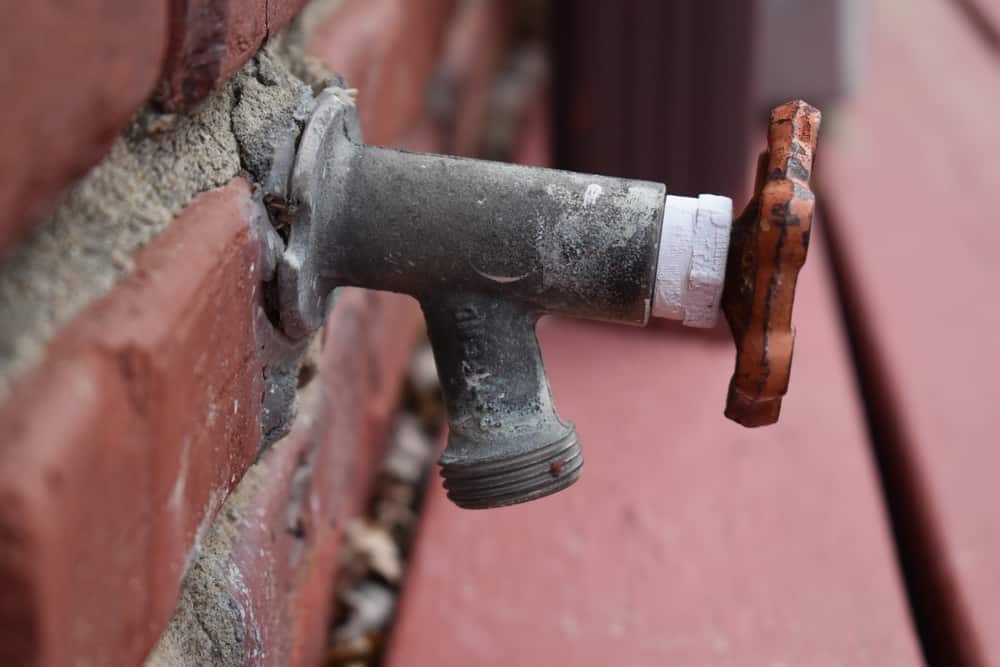
A garden hose is such a helpful tool, but over time, your outdoor spigot may look dingy. Calcium and lime build-up is common, especially if you have hard water.
To remove this build-up, surround your spigot with white vinegar! You can fill a small bag with vinegar and attach it to the spigot so it’s completely submerged in the vinegar.
Or you can soak a cloth and wrap it around the spigot instead. Loosely place a bag around the spigot to keep the cloth from drying out.
Leave your spigot for a few hours, then wipe it down with water and a scrub brush.
17. Wash Your Fruits and Vegetables
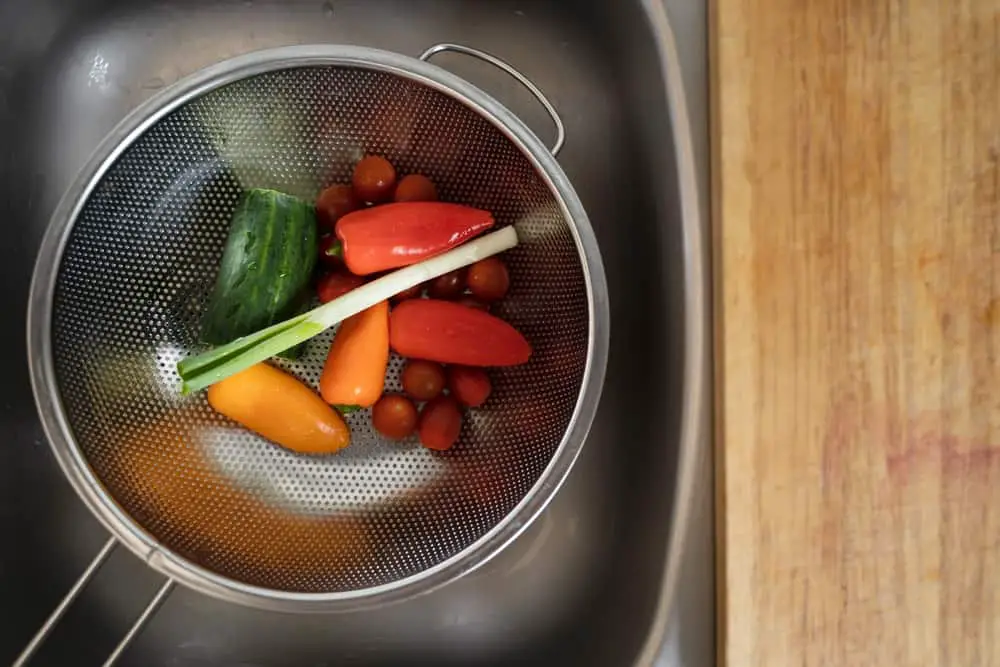
Even when you bring in produce from your own garden, it’s a good idea to rinse it before use. Water will remove any dirt, but sometimes you want to be extra thorough.
Try mixing a tablespoon of white vinegar with one quart of water. Use this solution to rinse your vegetables and remove both dirt and bacteria.
18. Revive Wilting Greens
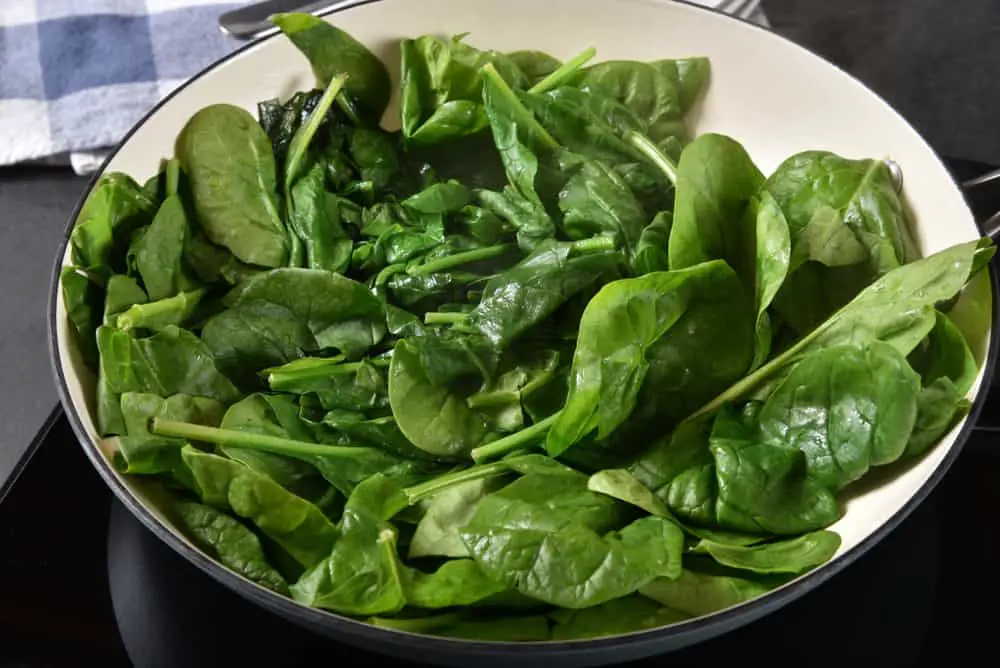
Sometimes you harvest your leafy greens before you actually have time to eat them. If your greens are looking wilted by the time you serve them up, use vinegar to revive them.
Place the greens in a bowl with some water and just a splash of vinegar. Toss them up and they’ll be ready to serve.
19. Trap Moths
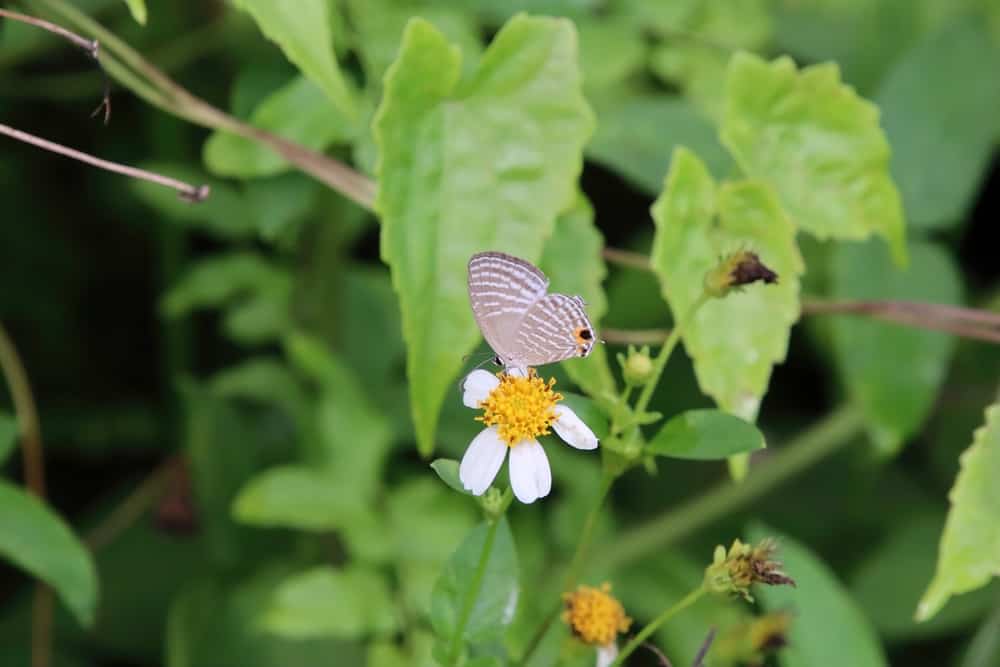
Moths aren’t just found in closets. They like to munch on plants much more than clothes! If you have a moth problem in your garden, try making a moth trap with white vinegar.
In a plastic jug, mix 1 cup white vinegar, ½ cup molasses, 1/8 teaspoon ammonia, and five cups water. Cut a 2-inch hole at the top of the jug for the moths to enter.
Hang the jug from a tree or place it near where you’re having moth problems. Empty the jug when it’s caught enough moths.
20. Test The Acidity Of Your Soil
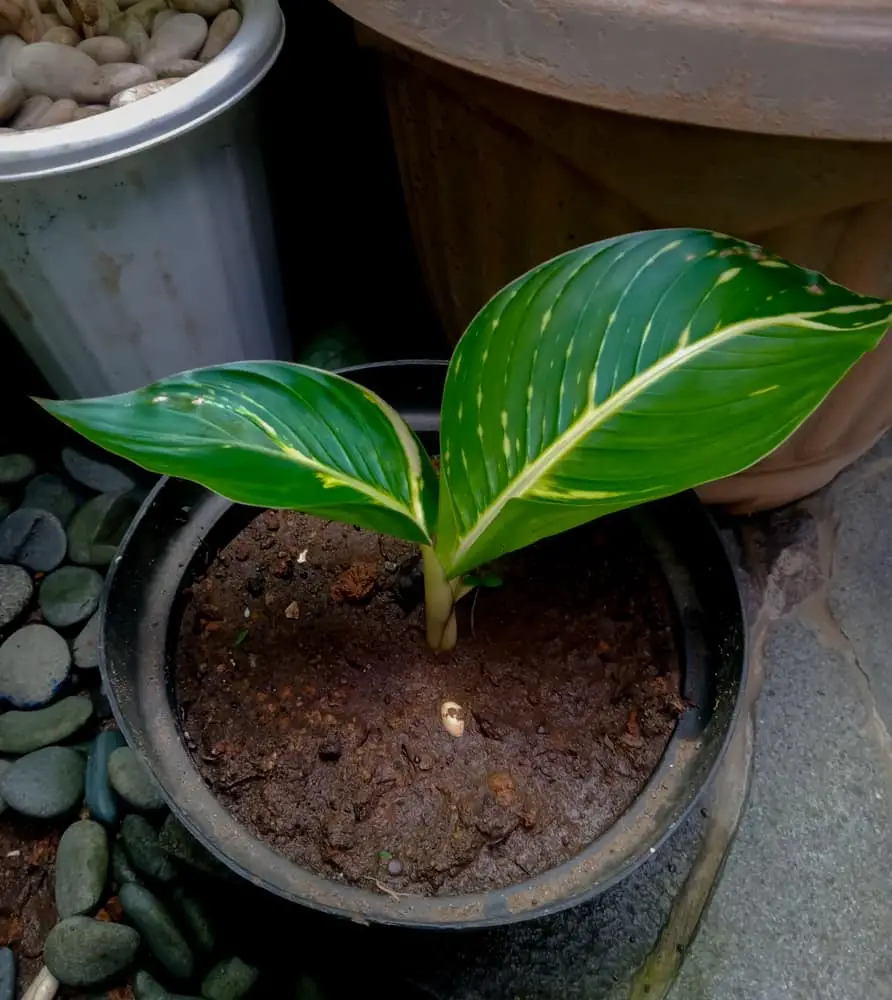
Are you struggling to get some of your plants to grow as well as you’d like? The problem could be your soil. Certain plants like alkaline soil, while others need more acidity.
If you’re not sure about the acidity of your soil, test it with white vinegar. Take half a cup of vinegar and add a small handful of soil to it. If the vinegar begins bubbling, your soil is alkaline.
You can then add some sulfur to the soil to build up the acidity if that’s what your plants need.
In Conclusion
Don’t just leave your white vinegar under your kitchen sink! Have a jug on hand out in your garden, and you’ll find there are many ways it can be helpful.
